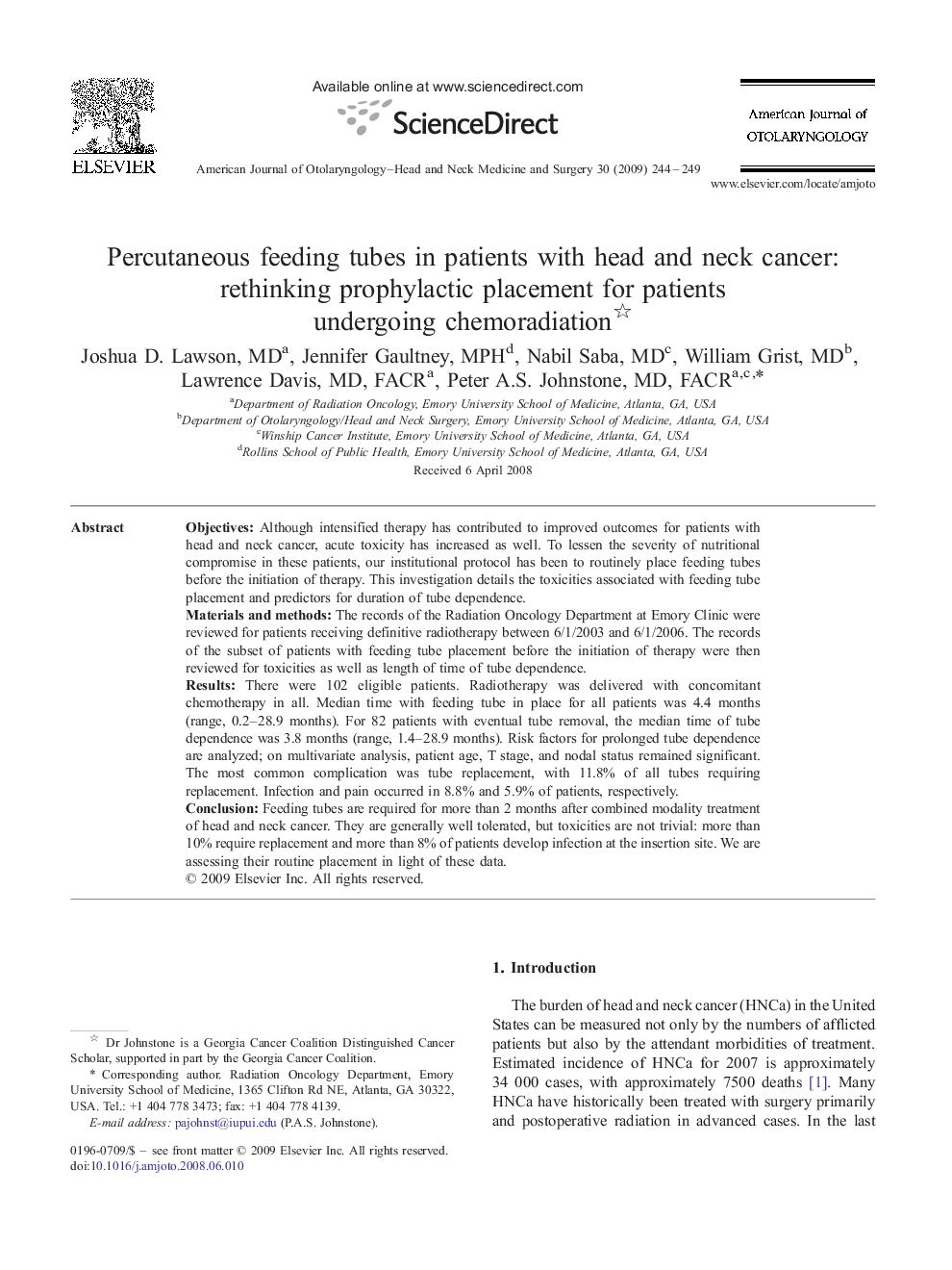| Article ID | Journal | Published Year | Pages | File Type |
|---|---|---|---|---|
| 4104228 | American Journal of Otolaryngology | 2009 | 6 Pages |
ObjectivesAlthough intensified therapy has contributed to improved outcomes for patients with head and neck cancer, acute toxicity has increased as well. To lessen the severity of nutritional compromise in these patients, our institutional protocol has been to routinely place feeding tubes before the initiation of therapy. This investigation details the toxicities associated with feeding tube placement and predictors for duration of tube dependence.Materials and methodsThe records of the Radiation Oncology Department at Emory Clinic were reviewed for patients receiving definitive radiotherapy between 6/1/2003 and 6/1/2006. The records of the subset of patients with feeding tube placement before the initiation of therapy were then reviewed for toxicities as well as length of time of tube dependence.ResultsThere were 102 eligible patients. Radiotherapy was delivered with concomitant chemotherapy in all. Median time with feeding tube in place for all patients was 4.4 months (range, 0.2–28.9 months). For 82 patients with eventual tube removal, the median time of tube dependence was 3.8 months (range, 1.4–28.9 months). Risk factors for prolonged tube dependence are analyzed; on multivariate analysis, patient age, T stage, and nodal status remained significant. The most common complication was tube replacement, with 11.8% of all tubes requiring replacement. Infection and pain occurred in 8.8% and 5.9% of patients, respectively.ConclusionFeeding tubes are required for more than 2 months after combined modality treatment of head and neck cancer. They are generally well tolerated, but toxicities are not trivial: more than 10% require replacement and more than 8% of patients develop infection at the insertion site. We are assessing their routine placement in light of these data.
